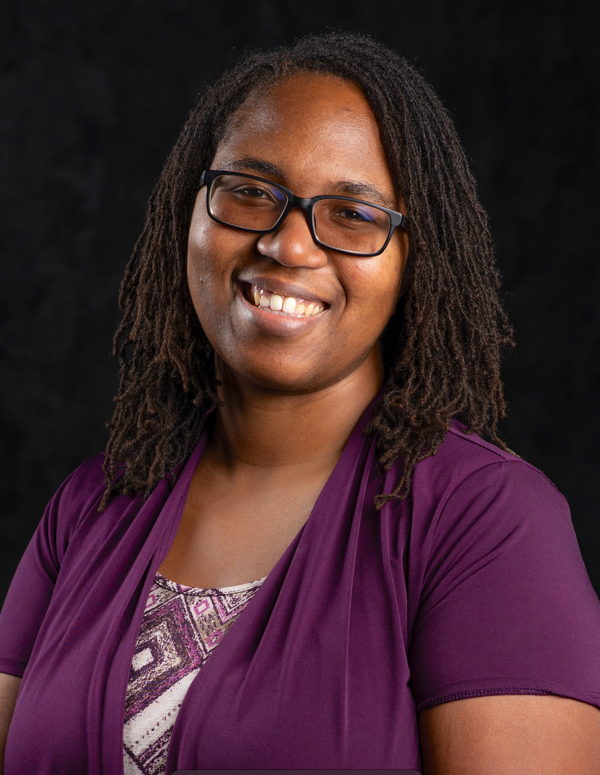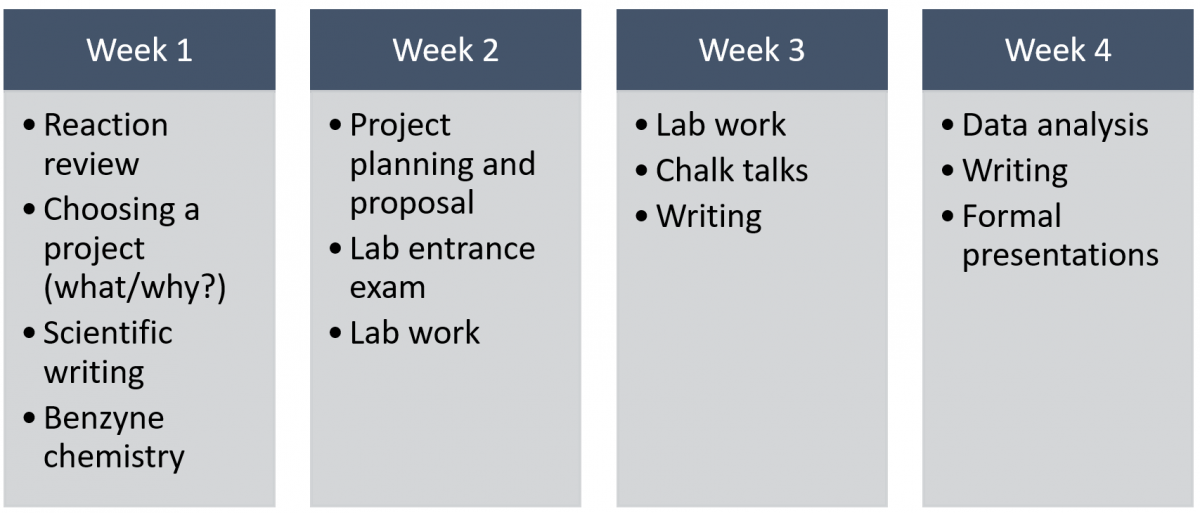Member Spotlight: Jessica Kisunzu
Connecting the research lab to the classroom – one block at a time
Jessica Kisunzu, Ph.D. (Colorado College)

I am an assistant professor at Colorado College and have been teaching organic chemistry here since Fall 2017. At CC, I teach our full organic chemistry sequence (which, at CC, is titled: Structures of Organic Molecules, Reactions of Organic Molecules, and Synthesis of Organic Molecules). I have also had the opportunity to co-teach an introductory short course called “Exploring the Hidden World of Astrochemistry” to incoming First-Year students. Finally, I teach and mentor research students every year.
Description of Colorado College and how the block schedule works
Colorado College is a primarily undergraduate liberal arts college in Colorado Springs, CO, with approximately 2500 students. Our Block Plan schedule is designed such that students and faculty have 1 primary course at a time, which they take/teach for 3.5 weeks (1 block). Credit-wise, a block is the equivalent to a semester course, so our 2-block organic chemistry sequence covers a similar foundation of material as one would see in a 2-semester organic course. The Department of Chemistry and Biochemistry is ACS certified and graduates approximately 15-20 majors every year.
An embedded research experience for students
The fact that students and faculty change courses every block means that consistency in research can be challenging on the Block Plan. A student can be in a research block for 3.5 weeks, but then might move to a different lab-intensive course in the next block and no longer be able work in the research lab. Similarly, faculty members may go from that same research block to a time-intensive introductory course, in which there’s no longer significant time for lab work or data analysis. One way that I, and many other faculty, have addressed this challenge is by leaning into one of the strengths of the Block Plan – the flexibility of scheduling during the block, particularly in advanced lab courses.
During a research block, students in my lab start off by reviewing the relevant literature for specific ongoing projects. We identify the framing of the work, open questions, and 1-2 distinct goals for the month. Once lab work begins, the lab is available all day (~9 am-4 pm) for students to set up, run, and analyze their reactions. This makes it easier to do schedule/plan longer reactions. I check in with each student daily to make sure that their plans are feasible for the day, to discuss each step, and to troubleshoot as problems arise. We have weekly group meetings with informal chalk-talks to involve all students in troubleshooting and to also give them more practice in describing their projects, including context, reaction mechanisms, and data analysis. The block ends with a formal presentation and a paper that summarizes their work.

The advanced organic course (Synthesis of Organic Molecules) is another great way to test new ideas and have students carry out condensed research projects. This course starts with a review of reactions from Organic 1 and 2, then introduces new chemistry related to the benzyne research in my lab. We discuss the process of choosing a synthesis project, including the target and route/strategy, then I work with the students to either develop a new project related to the ongoing benzyne work or to identify a distinct goal that advances the ongoing work. We spend the next 2 full weeks in a manner similar to the research block – lab work, chalk talks, data analysis, and writing. The block ends with formal group presentations on their projects and progress.

In both of these courses, students are designing and carrying out a multi-step synthetic sequence as part of a research plan, practicing analyzing and presenting data, and presenting their work in various formats. As part of a bigger research program, their work advances current projects in my lab by either implementing next steps, synthesizing starting material or analogs, or trying out potential new directions. I have found this method to be very effective in providing research experience, improving research continuity throughout the year, and advancing the projects in my lab.
More active learning in the classroom
I have also been working on developing a series of multidimensional journal club activities for the advanced organic course, where students and I discuss not just the synthesis of these molecules, but also their historical/societal significance. This type of conversation allows them to connect synthesis (often natural product synthesis) to their broader interests and it engages several layers of analysis and application. I discuss this activity more in the context of the first target molecule, morphine, in a J. Chem. Ed. article – A Multidimensional Journal Club Activity for an Undergraduate Advanced Organic Chemistry Course.
